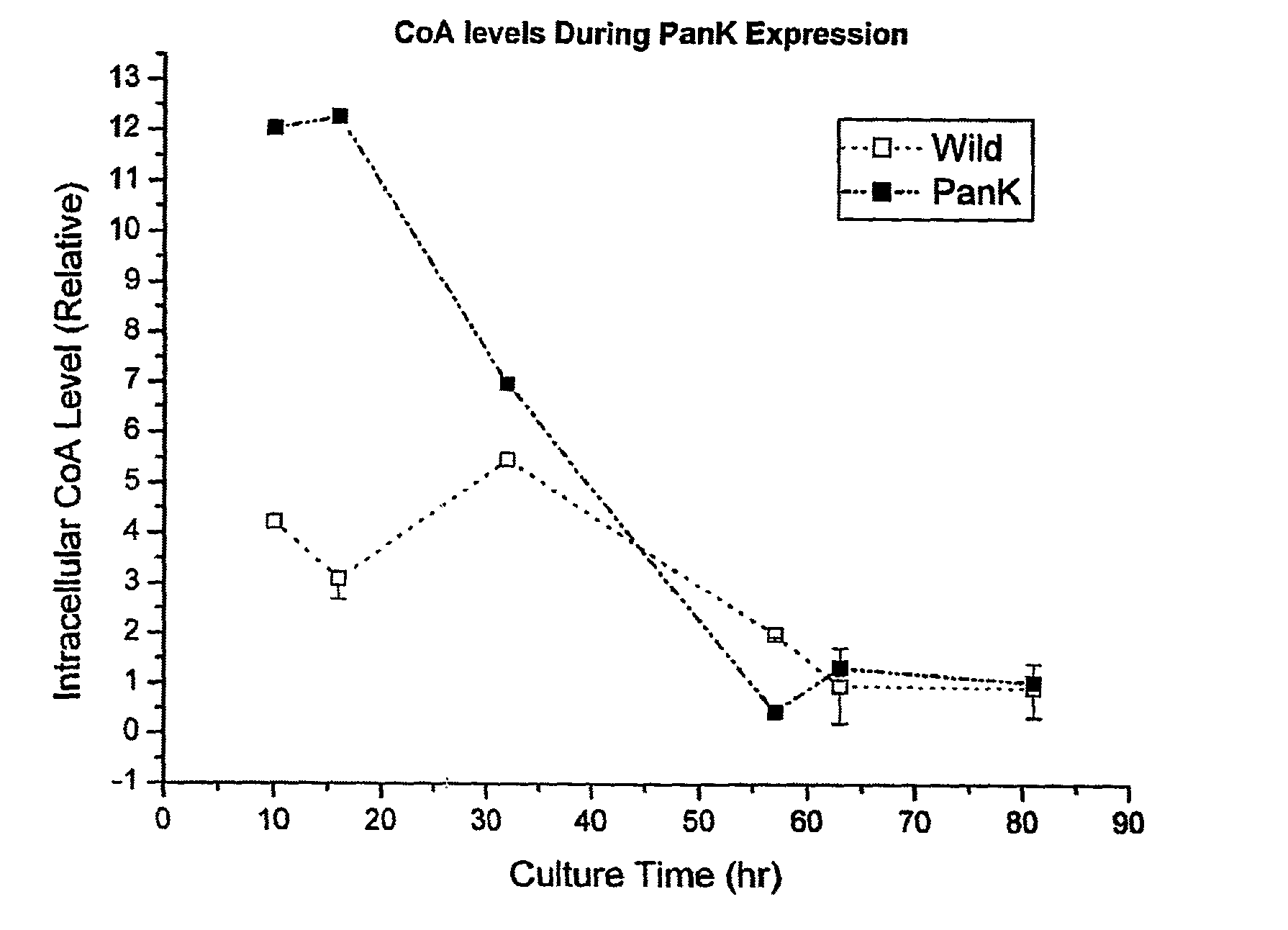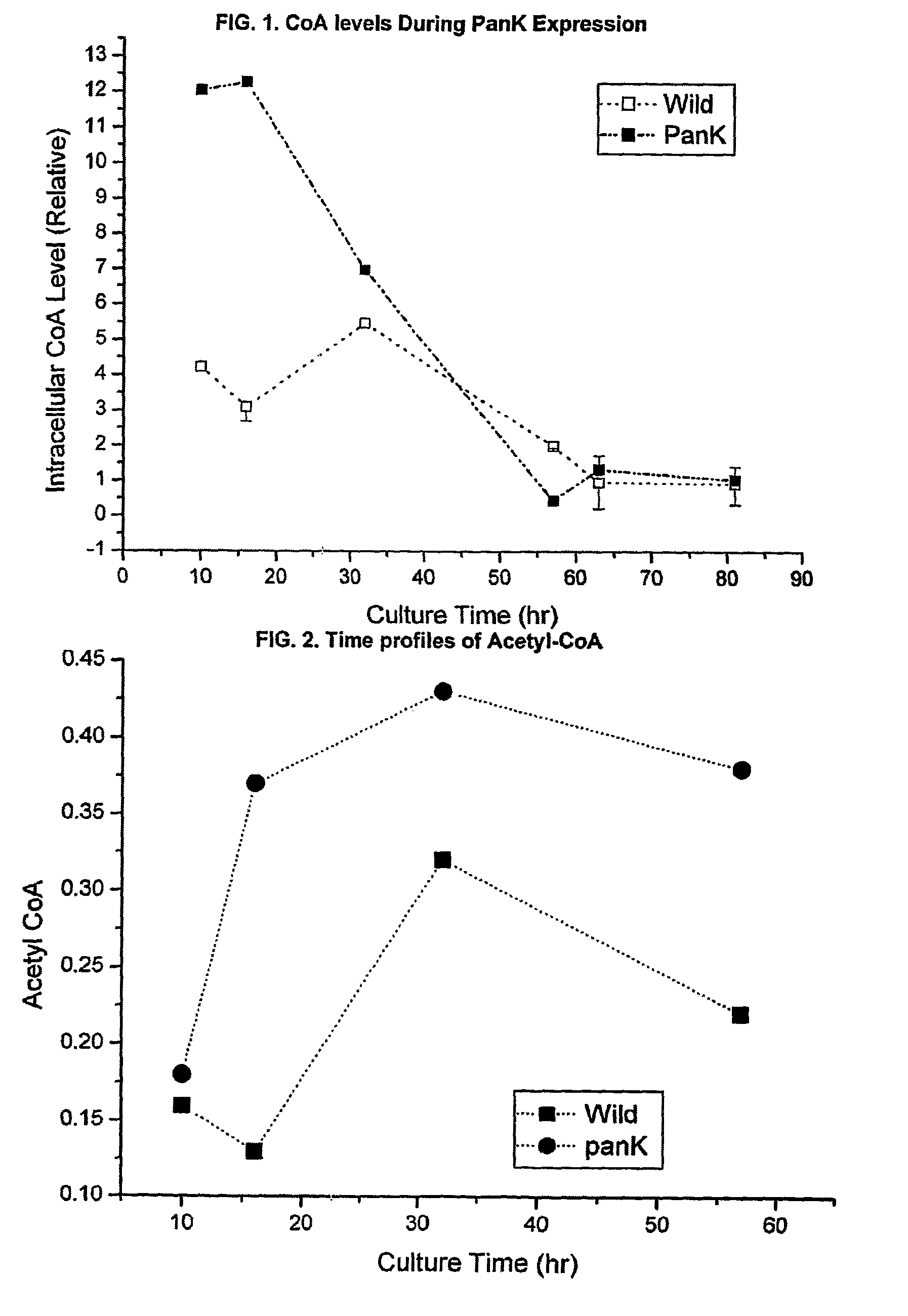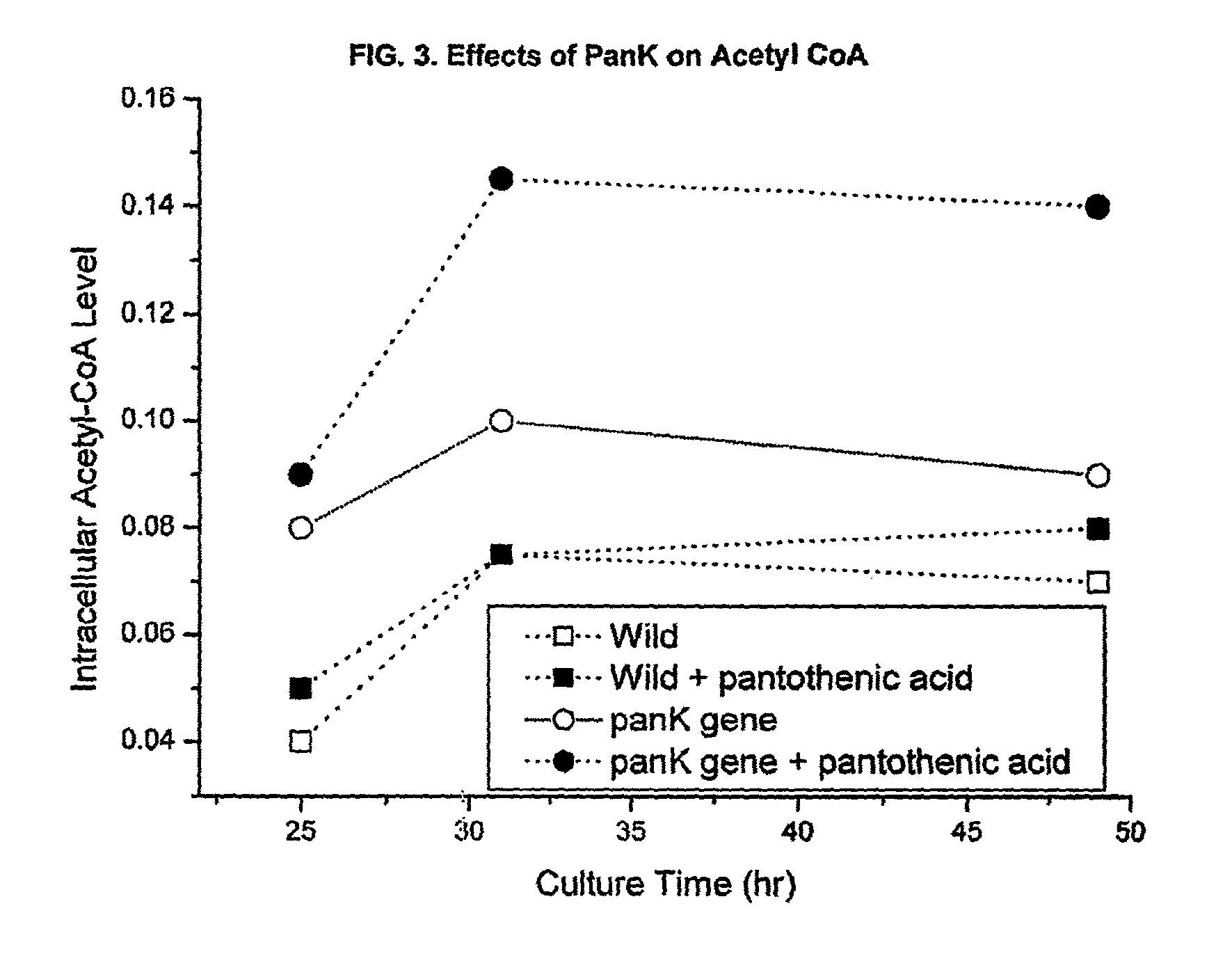Pantothenate kinase overexpression and pantothenic acid supplementation in actinomycetes
a pantothenate kinase and kinase technology, applied in the field of pantothenate kinase overexpression and pantothenic acid supplementation in actinomycetes, can solve the problems of difficult culture culture of microorganisms that produce natural polyketides, difficult chemically synthesized polyketides, and inability to apply metabolic engineering of i>e. coli/i>actinomycetes, etc., to promote the biosynthesis of co
- Summary
- Abstract
- Description
- Claims
- Application Information
AI Technical Summary
Benefits of technology
Problems solved by technology
Method used
Image
Examples
example 1
Materials and Methods
[0050]E. coli was grown in Luria-Bertani broth (LB) with pH of 7.5 containing kanamycin and ampicillin. Cells were innoculated at 5×105 cells / ml and grown in a shaker flask, with rotation at 150 rpm, for 12 hours.
[0051]S. venezuelae cells were cultured in SPA medium containing per liter 1 gram of yeast extract, 1 gram of beef extract, 2 gram of tryptose, 10 gram of glucose, trace amount of ferrous sulfate, and appropriate antibiotics (25 μg / mL of thiostrepton or 50 μg / mL of kanamycin). Cells were innoculated at 5×105 cells / ml and grown in a shaker flask, with rotation at 150 rpm, for sampling. CoA and acetyl-CoA were assayed by HPLC according to the method described in Metabolic Engineering 6:133-139(2004). Metabolites were assayed by LC-MS system equipped with a reverse phase column (XTerra MS C18, Waters Co., MA) with the electrospray source with photodiode array detector. 10 mM ammonium acetate buffer solution was used as the mobile phase at a flow rate of 0....
example 2
Pank Overexpression
[0052]S. venezuelae cells (wild type) were transformed by protoplast fusion using the E. coli-Streptomyces shuttle vector pIBR25 containing the panK gene from E. coli (pIBR25-PanK), added to the vector at the BamHI restriction sites. The transformed Streptomyces cells were unstable until the cloned gene was integrated into the chromosome. To select the stable transformants, several generations of transfer to the fresh media with selection pressure was performed. The transformed cells were then grown in pantothenic acid supplemeted medium (1 mg / ml), and CoA and acetyl-CoA levels were measured.
[0053]The data in FIG. 1 shows that overexpression of one of the upstream rate-controlling PanK together with pantothenic acid supplementation enhances the intracellular concentration of coenzyme A compounds. Initial intracellular CoA levels were about three times higher than that of wild type strain.
[0054]Similarly, FIG. 2 demonstrates that intracellular acetyl-CoA level was ...
example 3
Secondary Metabolite Production
[0056]Improving CoA and / or acetyl-CoA levels is a good first step, but it is also necessary to translate these gains into increased production of the desired secondary metabolite. To demonstrate that this goal was achievable, we stimulated deoxyoleandolide production in S. venezuelae. Cells were transformed with pIBR25-PanK or pIBR25. Stable transformants were selected by serial culture, as previously described.
[0057]One of the polyketides in the oleandomycin biosynthesis pathway (see FIG. 6) called 8,8-α-deoxyoleandolide was much higher for S. venezuelae with PanK overexpression and pantothenic acid supplementation (see grey circles in FIG. 4). With the addition of dTDP-L-olivose and dTDP-D-desosamine by sugar transferases, 8,8-α-deoxyoleandolide production increased biosynthesis of oleandomycin. By adding appropriate sugar transferase and sugar synthesizing genes, the production of oleandomycin is greatly increased due to excess CoA produced through ...
PUM
| Property | Measurement | Unit |
|---|---|---|
| pH | aaaaa | aaaaa |
| flow rate | aaaaa | aaaaa |
| flexibility | aaaaa | aaaaa |
Abstract
Description
Claims
Application Information
 Login to View More
Login to View More - R&D
- Intellectual Property
- Life Sciences
- Materials
- Tech Scout
- Unparalleled Data Quality
- Higher Quality Content
- 60% Fewer Hallucinations
Browse by: Latest US Patents, China's latest patents, Technical Efficacy Thesaurus, Application Domain, Technology Topic, Popular Technical Reports.
© 2025 PatSnap. All rights reserved.Legal|Privacy policy|Modern Slavery Act Transparency Statement|Sitemap|About US| Contact US: help@patsnap.com



